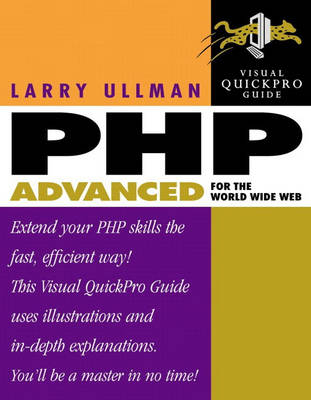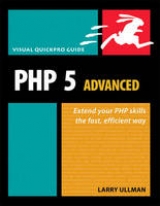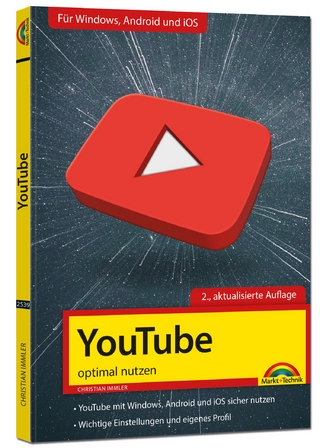
PHP Advanced for the World Wide Web
Visual QuickPro Guide
Seiten
2002
Peachpit Press Publications (Verlag)
978-0-201-77597-6 (ISBN)
Peachpit Press Publications (Verlag)
978-0-201-77597-6 (ISBN)
- Titel erscheint in neuer Auflage
- Artikel merken
Zu diesem Artikel existiert eine Nachauflage
PHP is a server-side, HTML-embedded scripting language. This QuickPro title with its step-by-step content is aimed at teaching specific topics in direct, focused segments. The scripts featured are based on features and capabilities that current PHP users most frequently inquire about, e.g. sessions, authentication, and object-oriented programming.
PHP is a server-side, HTML-embedded scripting language. ItÕs frequently being used to replace the functionality created by Perl to write CGI scripts). Similar to both HTML and CGI, PHP is faster to program in and faster to execute than CGI. PHP was written specifically for Web site creation, unlike Perl, C, or Java. Companies such as Honda, Patagonia, and Zoom.com all have Web sites utilizing PHP. PHP Advanced for the World Wide Web: Visual QuickPro Guide consists of approximately fifteen chapters of step-by-step content, aimed at teaching specific topics in direct, focused segments. The scripts featured in this book are based on features and capabilities that current PHP users most frequently inquire about (e.g. sessions, authentication, and object-oriented programming). as well as detailing those technologies that will be more important in the future, such as XML and Wireless Access Protocols.
PHP is a server-side, HTML-embedded scripting language. ItÕs frequently being used to replace the functionality created by Perl to write CGI scripts). Similar to both HTML and CGI, PHP is faster to program in and faster to execute than CGI. PHP was written specifically for Web site creation, unlike Perl, C, or Java. Companies such as Honda, Patagonia, and Zoom.com all have Web sites utilizing PHP. PHP Advanced for the World Wide Web: Visual QuickPro Guide consists of approximately fifteen chapters of step-by-step content, aimed at teaching specific topics in direct, focused segments. The scripts featured in this book are based on features and capabilities that current PHP users most frequently inquire about (e.g. sessions, authentication, and object-oriented programming). as well as detailing those technologies that will be more important in the future, such as XML and Wireless Access Protocols.
Larry Ullman, an experienced PHP programmer, is currently Lead Programmer at Com-Insights, a digital media services provider. He is the author of PHP for the World Wide Web: Visual QuickStart Guide and lives in State College, Pennsylvania.
Introduction.
1. Advanced PHP Programming.
2. Object-Oriented Programming.
3. Databases.
4. Security.
5. Developing Web Applications.
6. E-commerce.
7. Networking with PHP.
8. PHP and the Server.
9. XML and PHP.
10. Image Generation.
11. Creating PDFs.
12. Extending PHP.
Appendix A: Installation.
Appendix B: Databases.
Appendix C: General Resources.
Index.
| Erscheint lt. Verlag | 3.1.2002 |
|---|---|
| Verlagsort | Berkeley |
| Sprache | englisch |
| Maße | 178 x 229 mm |
| Gewicht | 714 g |
| Themenwelt | Mathematik / Informatik ► Informatik ► Web / Internet |
| ISBN-10 | 0-201-77597-2 / 0201775972 |
| ISBN-13 | 978-0-201-77597-6 / 9780201775976 |
| Zustand | Neuware |
| Haben Sie eine Frage zum Produkt? |
Mehr entdecken
aus dem Bereich
aus dem Bereich
Handbuch für die Praxis
Buch | Hardcover (2023)
O'Reilly (Verlag)
39,90 €



